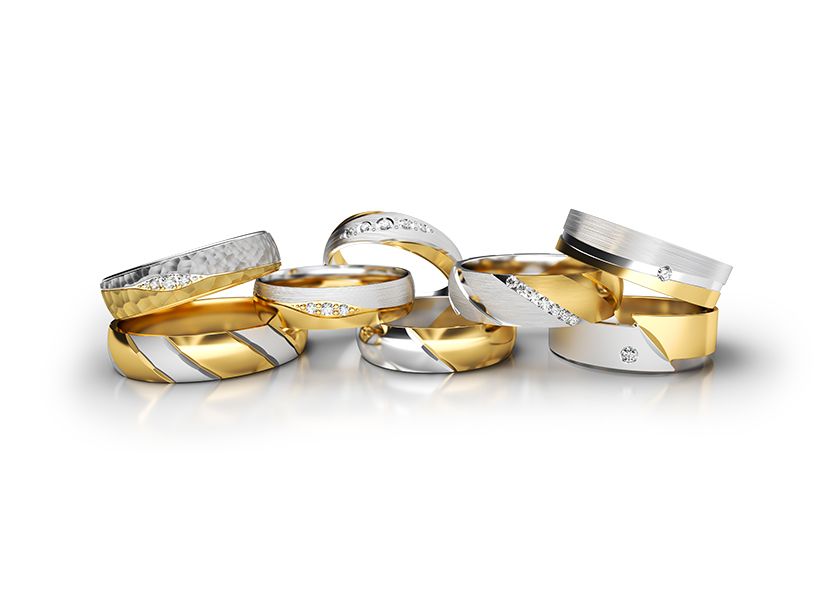
Two-Tone Jewelry Blends the Classic and the Modern
Conventional wisdom holds that you shouldn’t mix metals. “Don’t wear that gold necklace with those silver earrings,” someone may have told you once, “You’re going to look like a mess, like you just threw on whatever you had lying around with no thought for creating a coherent aesthetic.” Just take, for example, this forum post from 2005 asking, “Do you mix metals?” Some posters say it’s fine to do, some say they would never do it. Twenty years ago, mixed metal looks were still contentious. Twenty years before that, it was strictly forbidden by the arbiters of style.
But who were these arbiters of style? It's not clear why “don’t mix metals” was accepted as a hard-and-fast rule of fashion for so long. It’s possible that, like the old “no white after labor day” edict, its roots lay in the classism of the late 19th century. The turn of the century was a time when the old money aristocratic class devised rules to set them apart from the nouveau riche, who they saw as “uncultured.” Which fork to use, what color shoes to wear, how to wear jewelry: all these rules were about enforcing class distinctions, creating an in group and an out group. Over time, these rules of etiquette would filter down to the rest of us, devoid of their original context.
This era—the late 1800s, early 1900s—was also the first era of platinum jewelry. In the early 19th century, platinum was an oddity, rare outside of Russia (where it was used in coins), and difficult to work with due to its high melting point. But technological advances made it easier to melt and shape into jewelry. At the turn of the century, Fabergé helped to popularize both platinum and rose gold. The Art Nouveau era and the Ard Deco era saw a number of fabulous, dazzling designs in these two metals. Art Nouveau favored whimsical designs patterned after the shapes of the natural world, while Art Deco presented a more modern, angular style for the beginning of the age of technology. Look at portraits from these eras and you’ll find women in either all gold, all silver, or all platinum ensembles.
The reign of platinum jewelry would soon come to an end. In 1939, World War II began, and the platinum that would have been used in jewelry was appropriated for the war effort. White gold had been around before WWII as a low-cost alternative to platinum, but its popularity took off during and after the war. As the 20th century progressed, jewelry and fashion in general became something more personal than just a marker of class, a way for us to express something about ourselves. It’s only natural that out of this proliferation of choice, people started experimenting with mixed metals.
Over the course of the 21st century, we’ve seen the rise of layered necklaces and stacks of rings in different metals, among other mixed metal trends. You see mixed metals everywhere these days. It was one of the biggest jewelry trends of 2023 and 2024, and once again, it is set to “take over this summer,” as Vogue put it. It seems that mixing metals has gone from a trend to just another way to express yourself with jewelry.
Now that mixing metals is an acceptable fashion choice, what is the next frontier? Two-tone jewelry, or jewelry that combines two metals in one piece. Two-tone designs give you the best of both worlds. You get the unity of style of a single-colored metal with the statement of a mixed metal look. Our designs, combining two and sometimes three metals in a single ring, are designed with timelessness in mind. After all, the goal is to wear that wedding band for the rest of your life. A two-tone ring combines that timeless, classic wedding band feel with a modern sensibility and personalized flair.
Times have changed. The old rules are out. What’s in is creating a more individualistic look that makes you feel good and reflects your sense of self. It takes a little more work to figure things out for yourself, but developing your personal taste is ultimately so much more rewarding than blindly following outdated rules.